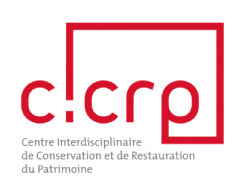Use of isotope analyses for the investigation and conservation of stone: studies on alabasters
Programme start: 2011
CICRP: Philippe Bromblet
Partnership(s): Bureau of Geological and Mining Research (BRGM), Historic Monuments Research Laboratory (LRMH), University of Paris 6
The purpose of this research is to develop a method of determining the origin of alabasters with the aid of isotopic tools. This soft material, primarily composed of gypsum (CaSO4, 2H2O), has been used in fine art sculpture from the Middle Ages to the Renaissance. Although the main supply sources in Europe are known (Spain, Italy, France, England etc.), it is at this time impossible to determine the precise provenance of the alabaster used in a given piece. It is thus a question of collecting samples from quarries and sculptures to carry out a feasibility study on the identification of the provenance of alabasters by the combination of different isotope dosages (S, O, Sr) along with the dosage of trace elements, the dosage of strontium and the examination of cathodofacies and the mineralogy. A first series of alabasters sampled from quarries (France, Spain) and sculptures from several French, English and Norwegian museums and monuments have already been studied and have yielded promising results.
Publications:
- Poster presented at the European Geosciences Union congress in Vienna (Austria) in May 2011. Kloppmann W., Bromblet Ph., Leroux L., Cooper A., Worley N. and Guerrot C. (2011b), ‘Origin of European alabaster artworks assessed through isotope fingerprinting (S, O, Sr)’, European Geosciences Union General Assembly 2011, Vienna, Austria, 02–08 April 2011. Geophysical Research Abstracts, Vol. 13, EGU2011-3419.
- Kloppmann W., Leroux L., Bromblet P., Guerrot C., Proust E., Cooper A.H., Worley N., Smeds S.A. and Bengtsson H.,’Tracing Medieval and Renaissance alabaster artwork back to quarries: A multi-isotope (Sr, S, O) approach’, accepted for publication (Oct. 2012) Archaeometry


